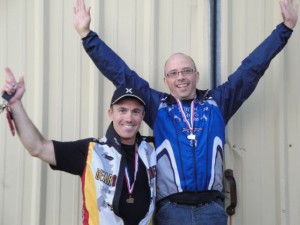MTBRaceNews.com originally posted this Q&A article.
Question: This season I’ll be focusing on MTB marathons with a handful of normal XC events thrown in. I’d like to improve my handling skills by riding more in the woods, but I’m not sure how to fit in my skills work. It seems to get especially complicated as I ramp up my road mileage.
Answer: Doing a season which includes both MTB marathons along with occasional XC events makes for a great combination. It sounds as if your focus will be on the marathon races while the XC events might serve as good ‘training’ and perhaps you’ll be doing those that are within close proximity or at some of your favorite venues. Whether you are racing for ninety minutes in a XC or five hours in a marathon it’s important to remember that the single most critical fitness consideration is your sustainable power or speed. Most marathon racers can stand to improve their marathon ability by racing XC events as well. The higher pace and intensity of an XC race is an excellent training stimulus which helps to further develop your ability to maintain a faster pace for a longer distance – thus boosting your marathon ability.
With the longer duration of the marathon races come some unique challenges that need to be addressed. You’ll be on your bike at least twice as long as a XC so it’s very important to understand the nutrition and pacing associated with the marathon distances. While building up your longer rides in training your body can adapt to the greater physical stress of being on the bike and in the elements for the longer duration. Incorporating longer rides (either done on or off road) will allow you to sort out these components of your marathon preparations.
Riding proficiency and with good skill is an equally important consideration when preparing for marathon racing. Effectively managing the course and its conditions with speed and little wasted energy will help you reach the finish line quickly. For most of us our skill can (and will) be a limiter either when the pace gets higher and/or once we get into the later miles when fatigue sets in. It should be apparent that in order to improve MTB riding skill, it’s important to spend time on the MTB. Taking this one step further by addressing the specific situations where your skill might be lacking can help to ensure skill improvement and greater riding proficiency. This means riding switchbacks, roots, rocks, steep descents, mud, fast descending, cornering or any of the numerous challenges that the races might throw your way. You’ll be up against several of these on any given ride so it’s helpful to have a single focus for each of the MTB rides you do. By focusing on one component of your riding and making a conscious effort to do it well you can effectively see improvement in that particular skill. Not only can skills improve with a focused effort, you’ll also build confidence.
To answer the question of “Where does my skill work fit in best?” let’s consider a couple of options, keeping in mind that our skills are most challenged when we are at race speed or once fatigue has set in. Some of your longer rides can and should be done on the mountain bike instead of on the road. Yes, this makes for a physically more challenging workload that might require some additional recovery, but it also more closely replicates the demands of marathon racing. Just as you do with the longer road rides, you can steadily progress to doing longer MTB rides. On days that you include some intensity or interval type work, consider if an option might exist to do the ride off road instead. Some workouts might work better than others on a given trail so see what might work best for you. It is important that some of your MTB rides include some high intensity since not only will it’ll help your race fitness, but it’ll also allow you to improve riding proficiency. If you only do slow, long distance MTB rides you should not expect to do fast, long distance MTB races. Build some speed work into your trail riding and both your fitness and riding skill will improve as a result of your efforts.
With improved fitness and better skill you’ll be ready for your marathon goals as well as the XC races that you choose to enter. Sometimes riding fast and riding trails happens to be the best approach – preparing for your races should be fun and can be methodical at the same time. Enjoy the training and best of luck at the races,
-TJ Woodruff

